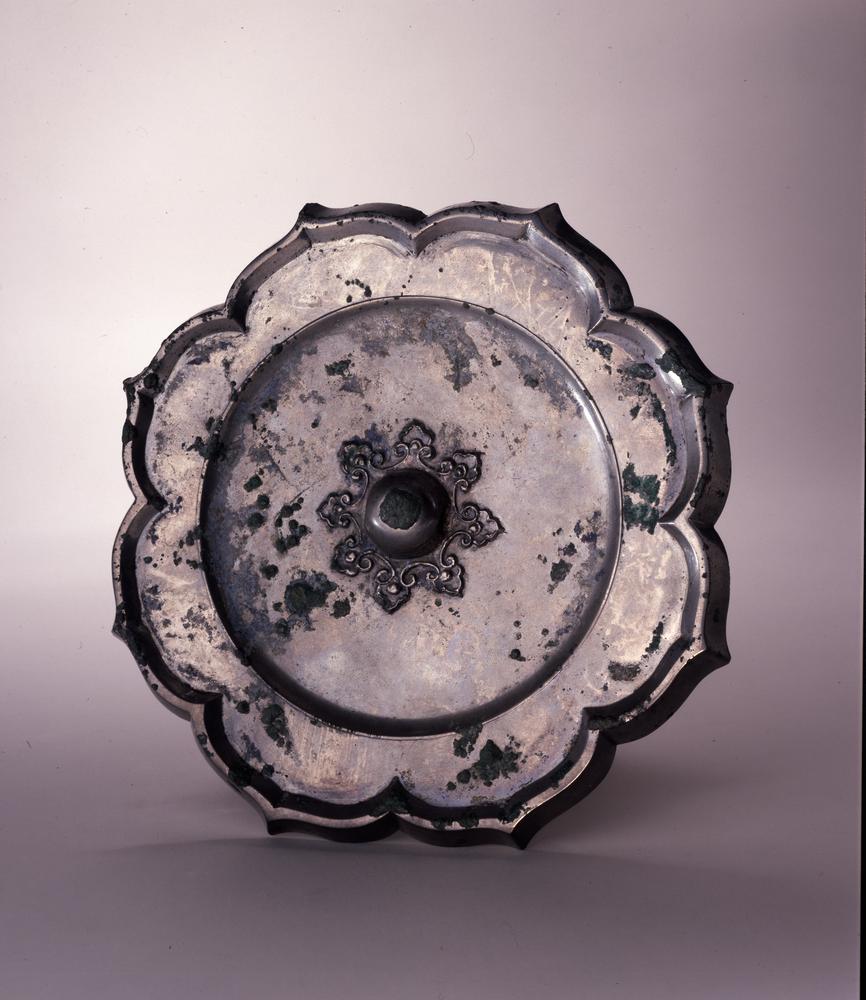Period:Tang dynasty Production date:9thC
Materials:silk, 絲綢 (Chinese),
Technique:painted
Subjects:bodhisattva cintamani 菩薩 (Chinese) 如意寶 (Chinese) flaming jewel
Dimensions:Height: 41 centimetres Width: 18.50 centimetres
Description:
Painting of a standing bodhisattva, possibly Ratnapani (“bearing a jewel in the hand”), holding a cintamani (flaming jewel). Ink and colour on silk.
IMG
![图片[1]-painting; 繪畫(Chinese) BM-1919-0101-0.109.+-China Archive](https://chinaarchive.net/Tang dynasty/Paintings/mid_00000124_001.jpg)
Comments:EnglishFrom Whitfield 1982:This painting and Fig.98 are from the same hand, and display some “Indian” characteristics although it seems likely that they were executed at Dunhuang. The Bodhisattva, holding a cintāmani in both hands, is of a golden colour, visible in the face, torso and through the transparent covering with small floral motifs around the legs. His companion in Fig.98 is coloured red in the same manner. Both have long sacrificial threads originally decorated with triple rows of bright white dots, and scarves falling in symmetrical folds on either side and filling the space between the legs. All these features seem to bespeak influence from the West. Figure 99 is also of this group. ChineseFrom Whitfield 1982: 此圖和Fig.98屬同一畫群,雖然看起來是在敦煌製作的,但表現出一些印度的特徵。菩薩兩手捧著火焰寶珠,臉和上半身施用金彩,透明的撒花的衣料之下的腿部也有金彩。與此相應的Fig.98中的像也是同樣的表現手法,只是身體的色彩是紅的。兩像的瓔珞上均有三行白點,綬帶有左右相稱的褶子垂在兩腿間。這些表現可能是受西方的影響。Fig.99的《觀世音菩薩像》也屬這一畫群。
Materials:silk, 絲綢 (Chinese),
Technique:painted
Subjects:bodhisattva cintamani 菩薩 (Chinese) 如意寶 (Chinese) flaming jewel
Dimensions:Height: 41 centimetres Width: 18.50 centimetres
Description:
Painting of a standing bodhisattva, possibly Ratnapani (“bearing a jewel in the hand”), holding a cintamani (flaming jewel). Ink and colour on silk.
IMG
![图片[1]-painting; 繪畫(Chinese) BM-1919-0101-0.109.+-China Archive](https://chinaarchive.net/Tang dynasty/Paintings/mid_00000124_001.jpg)
Comments:EnglishFrom Whitfield 1982:This painting and Fig.98 are from the same hand, and display some “Indian” characteristics although it seems likely that they were executed at Dunhuang. The Bodhisattva, holding a cintāmani in both hands, is of a golden colour, visible in the face, torso and through the transparent covering with small floral motifs around the legs. His companion in Fig.98 is coloured red in the same manner. Both have long sacrificial threads originally decorated with triple rows of bright white dots, and scarves falling in symmetrical folds on either side and filling the space between the legs. All these features seem to bespeak influence from the West. Figure 99 is also of this group. ChineseFrom Whitfield 1982: 此圖和Fig.98屬同一畫群,雖然看起來是在敦煌製作的,但表現出一些印度的特徵。菩薩兩手捧著火焰寶珠,臉和上半身施用金彩,透明的撒花的衣料之下的腿部也有金彩。與此相應的Fig.98中的像也是同樣的表現手法,只是身體的色彩是紅的。兩像的瓔珞上均有三行白點,綬帶有左右相稱的褶子垂在兩腿間。這些表現可能是受西方的影響。Fig.99的《觀世音菩薩像》也屬這一畫群。
© Copyright
The copyright of the article belongs to the author, please keep the original link for reprinting.
THE END
![[Qing Dynasty] British female painter—Elizabeth Keith, using woodblock prints to record China from the late Qing Dynasty to the early Republic of China—1915-China Archive](https://chinaarchive.net/wp-content/uploads/2022/11/image-191x300.png)




